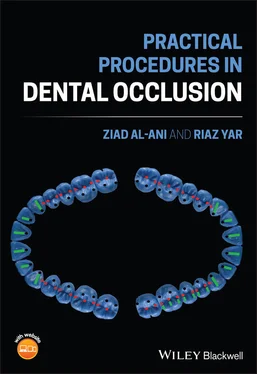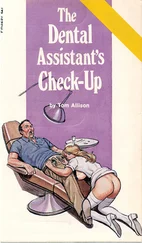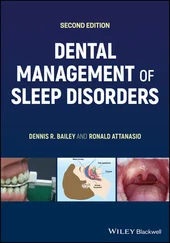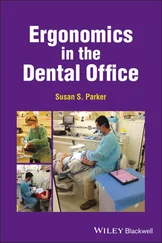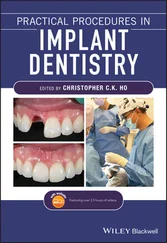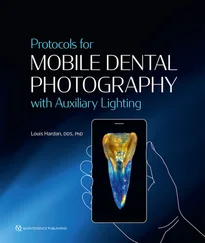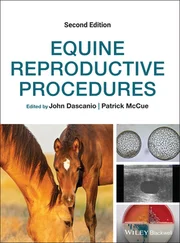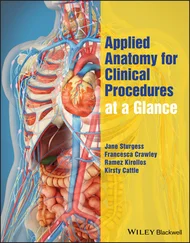Ziad Al-Ani - Practical Procedures in Dental Occlusion
Здесь есть возможность читать онлайн «Ziad Al-Ani - Practical Procedures in Dental Occlusion» — ознакомительный отрывок электронной книги совершенно бесплатно, а после прочтения отрывка купить полную версию. В некоторых случаях можно слушать аудио, скачать через торрент в формате fb2 и присутствует краткое содержание. Жанр: unrecognised, на английском языке. Описание произведения, (предисловие) а так же отзывы посетителей доступны на портале библиотеки ЛибКат.
- Название:Practical Procedures in Dental Occlusion
- Автор:
- Жанр:
- Год:неизвестен
- ISBN:нет данных
- Рейтинг книги:3 / 5. Голосов: 1
-
Избранное:Добавить в избранное
- Отзывы:
-
Ваша оценка:
- 60
- 1
- 2
- 3
- 4
- 5
Practical Procedures in Dental Occlusion: краткое содержание, описание и аннотация
Предлагаем к чтению аннотацию, описание, краткое содержание или предисловие (зависит от того, что написал сам автор книги «Practical Procedures in Dental Occlusion»). Если вы не нашли необходимую информацию о книге — напишите в комментариях, мы постараемся отыскать её.
A robust and accessible resource on occlusion for general dental practitioners Practical Procedures in Dental Occlusion
Practical Procedures in Dental Occlusion
Practical Procedures in Dental Occlusion — читать онлайн ознакомительный отрывок
Ниже представлен текст книги, разбитый по страницам. Система сохранения места последней прочитанной страницы, позволяет с удобством читать онлайн бесплатно книгу «Practical Procedures in Dental Occlusion», без необходимости каждый раз заново искать на чём Вы остановились. Поставьте закладку, и сможете в любой момент перейти на страницу, на которой закончили чтение.
Интервал:
Закладка:
Names: Al‐Ani, M. Ziad, author. | Yar, Riaz, author.
Title: Practical procedures in dental occlusion / Ziad Al‐Ani, Riaz Yar.
Description: First edition. | Hoboken, NJ : John Wiley & Sons, 2022. | Includes bibliographical references and index.
Identifiers: LCCN 2021013458 (print) | LCCN 2021013459 (ebook) | ISBN 9781119678519 (paperback) | ISBN 9781119678489 (adobe pdf) | ISBN 9781119678526 (epub)
Subjects: MESH: Dental Occlusion | Malocclusion–prevention & control | Orthodontics, Corrective–methods
Classification: LCC RK523 (print) | LCC RK523 (ebook) | NLM WU 440 | DDC 617.6/43–dc23
LC record available at https://lccn.loc.gov/2021013458LC ebook record available at https://lccn.loc.gov/2021013459
Cover Design: Wiley
Cover Image: © Ziad Al‐Ani
Acknowledgements
The authors wish to acknowledge the kind permission of Claire O'Connor, Neil Sparkes and Deborah Khadem in using them as photographic models in some chapters of this book.
We are very grateful to Tanya McMullin, Loan Nguyen and Bhavya Boopathi for their advice and support in the production of this text.
We would like to thank Mr Robert Gandy, Ceramist, The Cube Advanced Dental Laboratory for the Wax up on the front page and all the ceramic restorations documented in the book.
About the Companion Website
Don’t forget to visit the companion website for this book:
www.wiley.com/go/al‐ani‐and‐riaz/dental‐occlusion 
There you will find valuable material designed to enhance your learning, including:
Videos
Figures from the book as downloadable PowerPoint slides

About the Book
The subject of occlusion has traditionally been very difficult to learn, understand and manage. As a result, an unwanted mystique has been built around it that has intimidated a large part of the dental profession.
It is now more important than ever that dental practitioners familiarise themselves with a subject that so intimately affects their daily professional lives.
Restorative treatment outcome is highly dependent on the occlusion of the restoration when the treatment is complete and therefore sound up‐to‐date knowledge of all evidence‐based aspects of this commonly encountered condition is essential.
General practitioners usually have very limited practical clinical experience in occlusion and most of the books available for them are theory‐based resources.
This book aims to enable readers to gain a solid foundation of knowledge of occlusion, by providing practical, learnable, usable information and techniques which are demonstrated in a practical and easy‐to‐understand style. The intention is to explain current evidence‐based practical concepts in the field of dental occlusion so that they can be reflected in the reader's clinical practice.
The book contains a series of everyday clinical situations in occlusion, that may be encountered in general practice, to help readers understand and engage with the information and to promote effective clinical management.
It aims to provide practical guidance to what is required to optimise restorative treatment outcomes, including occlusion, in simple and advanced restorative care. The book also promotes learning as a dynamic process of active involvement. It encourages valuation by self‐assessment with questions at the end of the book.
Chapter 1 – Terminology
It is important we address terminology right at the start to reduce the confusion that has been created throughout the history of occlusion. As a source, Glossary of Prosthodontic Terms 2017 edition is used throughout the book.
Chapter 2 – Neuroanatomy – Why is It Important?
This chapter will address neuromuscular philosophies and introduce the neurolink between all systems from the periodontal mechanoreceptors on teeth through to central pattern generators in the pons and muscles and temporomandibular harmony.
Chapter 3 – What's of Use to Me in Practice? Armamentarium, Equipment and Techniques
This is a ‘how‐to’ chapter. It is important for the clinician to know the equipment and techniques used in occlusal examination, registration and record. This chapter also discusses facebow, articulators and how to make a stabilisation splint.
Chapter 4 – I Don't Know What I Am Recording Where are the True Contacts?
This chapter illustrates a classic problem most of the practitioners face when recording occlusal contacts using different articulating papers. It will highlight the following:
morphology and type of occlusal contacts in class 1, class 2 and class 3 relationships
the importance of selecting the correct size of articulating papers
the appropriate techniques in recording occlusal contacts
how to properly mark shiny occlusal surfaces.
Chapter 5 – The Crown is High
This clinical scenario will highlight the possible factors which may contribute to this situation (a high crown). It discussed the importance of accurate opposing alginate impression and mounting of the casts. The laboratory handling of the cast and the provisional crown will be covered.
Chapter 6 – My Bite Feels Different
Using a clinical scenario of a change of patient bite following fitting of an indirect restoration, this chapter will mainly focus on the importance of adopting the conformative approach in restorative dentistry. The possibility of introducing iatrogenic changes to a patient's bite is quite real and can have immediate consequences. Avoidance of the problem is the best approach but to do this, you must be aware of the potential pitfalls in restorative care.
Chapter 7 – My Front Tooth Filling Keeps Fracturing
This clinical scenario of a fractured upper central incisor composite restoration will highlight the importance of checking premature contacts in centric relation and dynamic occlusion.
Chapter 8 – TMD and Occlusion – Is There a Link?
Opinion regarding the importance of occlusion as an aetiological factor in the development of TMDs has shifted between it being the main causative factor and there being no correlation at all. This chapter will discuss this controversy and provides the reader with findings from contemporary literature.
Chapter 9 – How Would I Adjust a High Occlusal Contact?
This chapter will explain the proper techniques which should be adopted when adjusting the occlusal contacts and interferences by the dentist.
Chapter 10 – How Would I Ensure a Good Occlusion on Posterior Composite Restorations?
This chapter will illustrate the concepts and practical steps of achieving occlusal surfaces which provide proper reconstruction of natural morphology. It will highlight the following aspects:
conforming to existing guidance in restored teeth
creating departure clearance spaces
the importance of the location of the occlusal contact.
Chapter 11 – My Front Teeth Feel Loose and Are Moving
This chapter will discuss occlusal trauma from functional or parafunctional forces. Lack of freedom in centric and the effect of RCP–ICP slide on anterior teeth will be also covered.
Читать дальшеИнтервал:
Закладка:
Похожие книги на «Practical Procedures in Dental Occlusion»
Представляем Вашему вниманию похожие книги на «Practical Procedures in Dental Occlusion» списком для выбора. Мы отобрали схожую по названию и смыслу литературу в надежде предоставить читателям больше вариантов отыскать новые, интересные, ещё непрочитанные произведения.
Обсуждение, отзывы о книге «Practical Procedures in Dental Occlusion» и просто собственные мнения читателей. Оставьте ваши комментарии, напишите, что Вы думаете о произведении, его смысле или главных героях. Укажите что конкретно понравилось, а что нет, и почему Вы так считаете.
